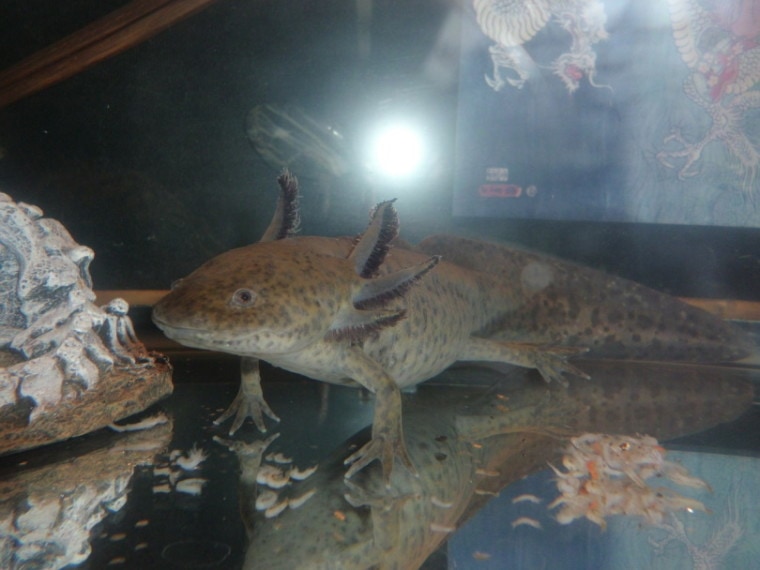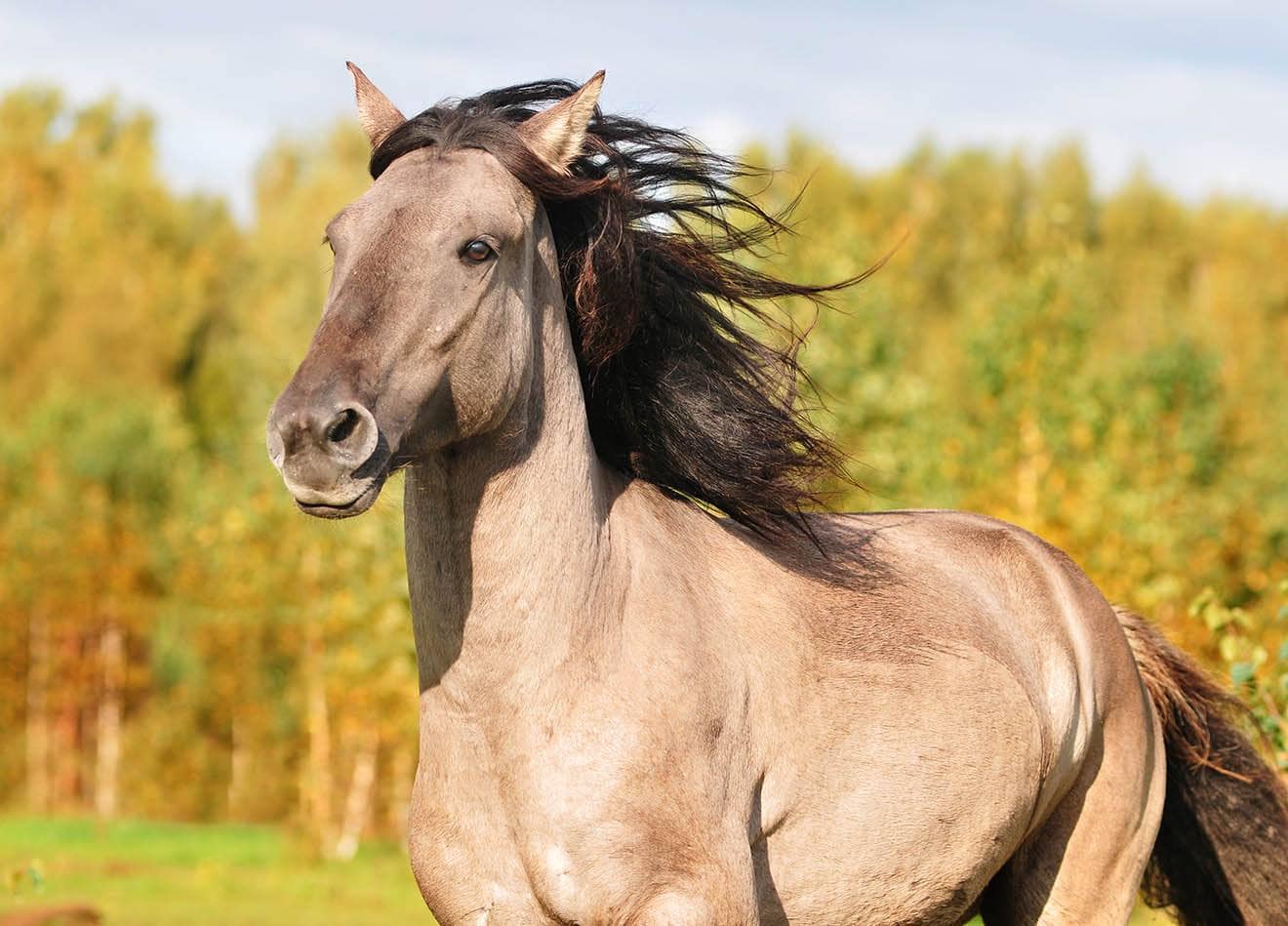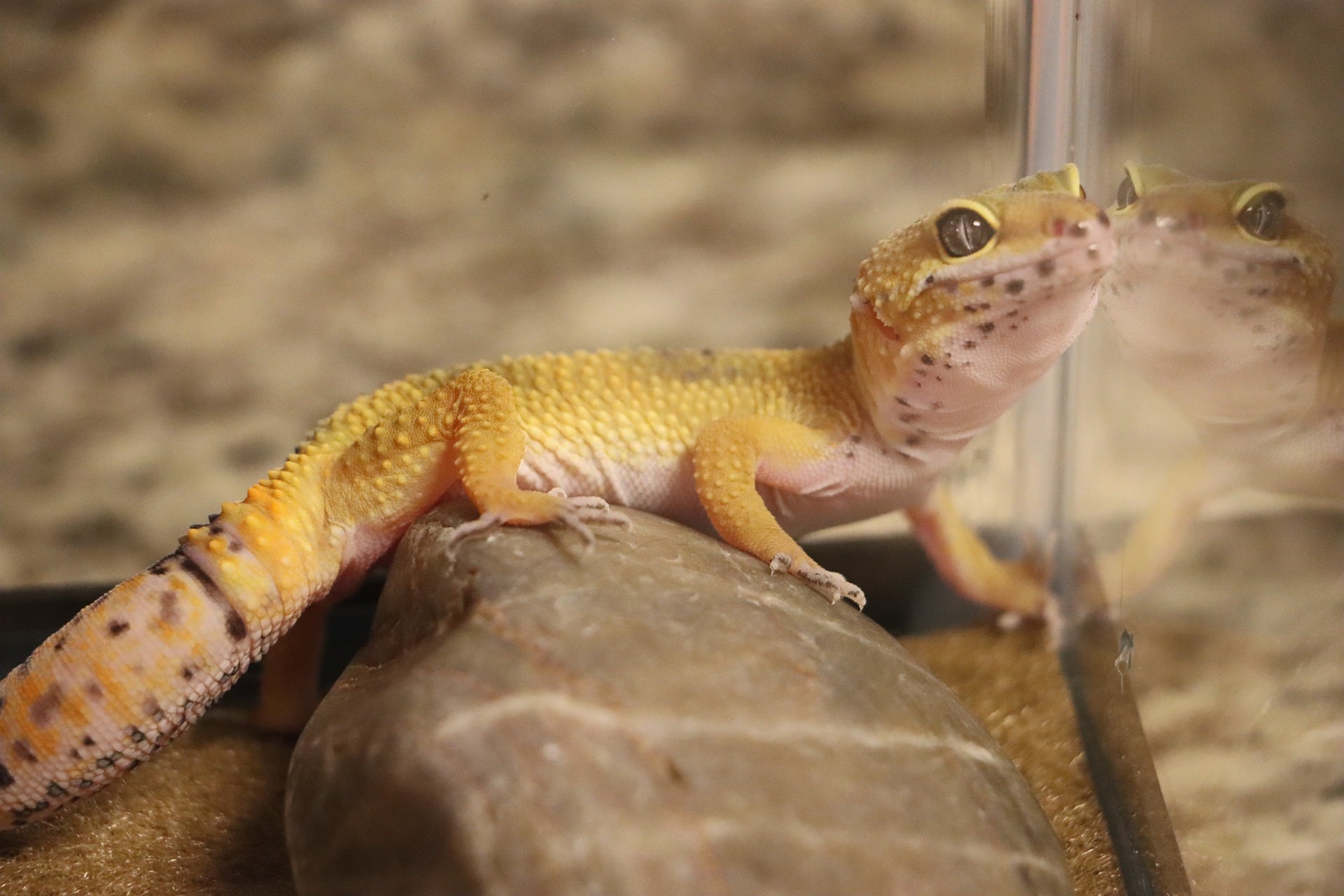
Though they are commonly referred to as Mexican Walking Fish, axolotls are nocturnal amphibians closely related to tiger salamanders. The word “axanthic” simply means that it lacks the red and yellow hues on its skin, so it ends up being a greyish color.
In the wild, axolotls are exclusively found in Lake Xochimilco in Mexico. They are endangered due to rapid urbanization destroying their natural habitat.
Quick Facts about Axanthic Axolotl

| Species Name: | Ambystoma mexicanum |
| Common Name: | Mexican Walking Fish |
| Care Level: | Medium |
| Lifespan: | 15 years |
| Adult Size: | 6 – 18 inches |
| Diet: | Mollusks, larvae, worms, crustaceans |
| Minimum Tank Size: | 10 gallons |
| Temperature: | 59 – 73 degrees F (15 – 23 degrees C) |
Do Axanthic Axolotls Make Good Pets?
These neotenic salamanders make good pets depending on what you want in a pet.
Do you want something you can handle and cuddle? Then the axolotl probably is not a good fit. Handling should only be done when absolutely necessary (like tank cleaning), and too much handling could harm them.
If, however, you are looking for a pet that is low maintenance for feeding reasons, axolotls are a good choice. In this aspect, they are low maintenance because they can survive up to 2 weeks without food, and adults only regularly eat every 2 or 3 days.
Despite this, their tank conditions must be kept at an exact temperature range and have specific water and substrate conditions. Otherwise, they may fall ill.
Appearance
Axolotls are closely related to salamanders, so they are similar in appearance. They have four legs, a long tail that helps them swim around, and the most notable are their external gill stalks, also called “rami.” They are three tentacle-like protrusions coming from the sides of their faces, three on each side. Attached to the rami are filaments, little “hairs” that help them with gas exchange.
Axantic Axolotls are greyish in color, and one of many color varieties. Axolotls also come in green, albino, melanoid, leucistic, golden albino, copper, and green fluorescent protein.
How to Take Care of Axanthic Axolotl
Tank
Axolotl tanks need to be at least 10 gallons big for each one you have. That means a 2 axolotl tank needs to be 20 gallons, 3 needs to be 30, and so on.
Your tank needs to also have a few hides. Axolotls love to hang out at the bottom of the tank, so they will enjoy foraging through any structures or plants you put in your tank. Good plants (real or fake) to put in your tank include anubias, java mosses, and hornworts.
A filter is a must with any axolotl tank. That’s because the creatures are extremely sensitive to water conditions. The best kind is an external canister filter, so the water stays as still as possible.
It’s recommended to change ⅓ of the tank water every week. Remember that the replacement water needs to sit out for 24 hours before changing it to dissolve the chlorine. Cleaning or replacing the filter needs to happen every 2 to 4 weeks.
Plastic plants and hides can be washed with warm water then soaked in a bleach solution for around 15 minutes before being placed back in the tank. Fecal matter should be cleaned out daily and the whole tank should be cleaned out once every three months.

Lighting
Luckily, these creatures don’t need special lighting to survive in captivity. Light might disrupt them for a time, due to their lidless eyes.
Some axolotl owners choose to have a special low light for visual appeal. This is usually fine, but they may go through an adjustment period. Eventually, they will get used to it. It helps to have caves and other hides just in case.
Water Maintenance
Axolotls live in water, so their water must be maintained to perfection if you want to have a healthy and happy amphibian.
Maintaining the correct water temperature is crucial toward maintaining the health of your axolotl. It has to be between 59-73 degrees F, otherwise, there can be adverse health effects, whether too high or too low.
Check out this video to find out more ways to keep your axolotl tank as cool as possible.
You must also keep chlorine out of the water and keep the water’s Ph, acidity, and alkalinity in check. Get a filter to keep the water clean, but get one that does not disturb the water too much. Axolotls do the best in still water.
Substrate
What kind of substrate you put in your axolotl tank is very important. They breathe through the water in their tank, so you will want the appropriate substrate that doesn’t flake off and get stuck in their gut or gills. You also do not want a bare bottom tank as this is too slippery for the creature to walk on.
Sand is the best kind of substrate for axolotls. Plants and hides can be added easily, plus axolotls love to dig around in it.
Tank Recommendations
| Tank Type: | 10-gallon glass aquarium tank (minimum) |
| Lighting: | N/A |
| Temperature: | Keep it cool, in the low 60’s F |
| Best Substrate: | Sand |
Feeding Your Axanthic Axolotl
An axolotl is very easy to feed. In the wild, they mostly eat mollusks, but they can also eat worms, insects, and even small fish. But in your care, you can feed him worms. They like to eat earthworms, blackworms, and bloodworms.
Mature axolotls can be fed 2 worms every 2-3 days. If they are still full from the last meal, they may choose not to eat. If you have a young and growing axolotl, though, you will want to feed it every day.
Diet Summary
| Fruit: | 0% of diet |
| Insects: | 0% of diet |
| Meat: | 100% of diet – blackworms, bloodworms, or earthworms |
| Supplements Required: | None |
Keeping Your Axanthic Axolotl Healthy
The health of your axolotl depends largely on the condition of the water he lives in. It must be still, have the proper Ph balance, free of harmful chemicals, and the perfect temperature.
Hot water temperatures could cause your axolotl could experience fungal infections, reduced appetite, or even death. It can also cause ammonium toxicity in the water, which is also detrimental to axolotls. Lower temperatures mess up their metabolism, slowing it way down and making them slow and sluggish.

The 3 Common Health Issues
1. Stress
Stress is the leading cause of illness in axolotls. The water must be clean and have no excessive flow, as this leads to stress. An overly aggressive tank mate could also cause your axolotl to be overstressed. You can tell your axolotl is stressed if they refuse meals frequently, or hook forward their gills or tails often.
2. Impaction
Overfeeding and improper substrate can lead to impaction. If your axolotl is refusing to eat or bloated, he may have an impaction.
3. Injury
Did you know axolotls can regrow limbs? This means they are somewhat impervious to injury unless that wound gets infected (another reason to keep the tank super clean).
Lifespan
Axolotls can live up to 15 years! On average, they live to around 10 years. As long as you keep them healthy with regular feedings and a clean tank, they will live a long and full life.
Breeding
If you wish to breed your axolotls, you will have to wait until they are at least 18 months old. Any younger and the process will be too hard on your female. Also, breeding best occurs between December and June.
The breeding tank should have lots of plants for eggs to be attached to. Put the male and female axolotls in the tank and wait for spawning to start. Then, once the female takes the sperm, she will lay eggs all around the tank for up to two days. After two or three weeks the eggs will hatch.
How Much Do Axanthic Axolotl Cost?
Axolotls are generally inexpensive, around $35, but axanthics are rare and can cost upwards of $100 or more. Don’t forget to also budget what you will need for a tank, filter, and accessories, which can cost up to $300 on the high end.

Care Guide Summary
Conclusion
Because they are endangered, it can add to the exotic appeal to own an axolotl as a pet. Keeping their habitat just right and feeding them every few days, they really don’t take too much effort to keep as a pet, either. Axanthic axolotls are a rare color and are more expensive than your average axolotl. If you decide this specific kind is not for you, there are other, less expensive colors to choose.
See Also:
Featured Image Credit: Jerrico Usher, Pixabay







